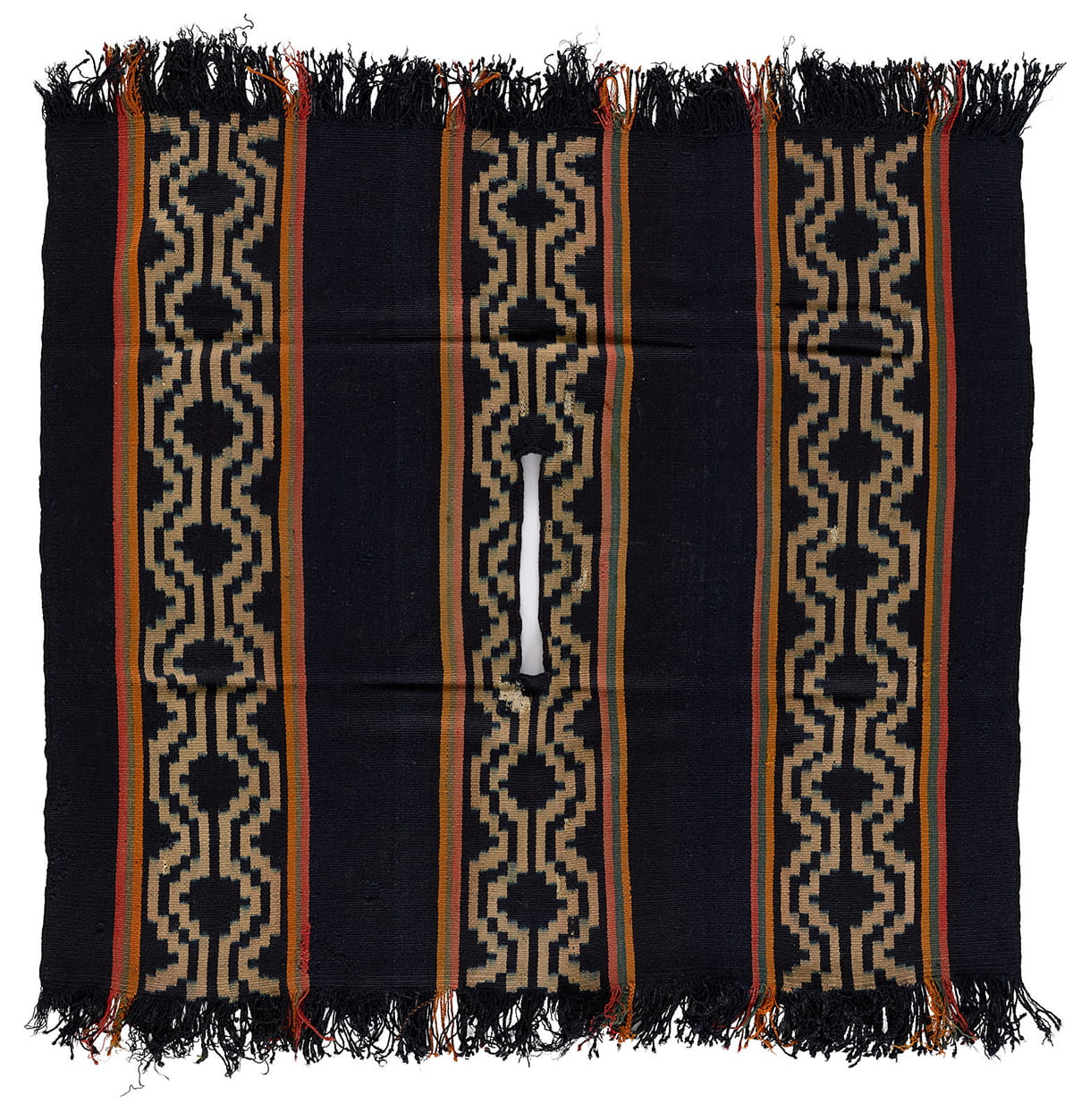The Indigenous Mapuche people originally occupied vast swaths of present-day Argentina and Chile, from fertile lowlands to the peaks of the Andes. Formidable and tenacious warriors, the Mapuche withstood the Incas and Spanish colonists for hundreds of years before being defeated in the late 19th century by the armies of Chile and Argentina.
The Spanish introduced horses and sheep to the region in the 16th century, and the Mapuche quickly adopted both. They learned to ride, forming a calvary in their struggle against the Spanish. They also mastered raising sheep and the arts of spinning, dyeing and weaving wool.
In the 17th century, the Mapuche popularized the poncho — a practical, loose-fitting garment well-suited to riding on horseback and mounted warfare. This example from the 20th century features a bold geometric design, indicating it was made for a man of importance, such as an elder or priest. The motif dates back before the Spanish conquest. The Mapuche associate it with mountains and volcanoes, the home of deities and spirits of the dead.
Mapuche women did the work of producing textiles, with girls learning by imitation. This poncho is an example of warp ikat patterning, expertly woven on a vertical loom. Mapuche ikats are tied so carefully that they are often taken for tapestry weave.


